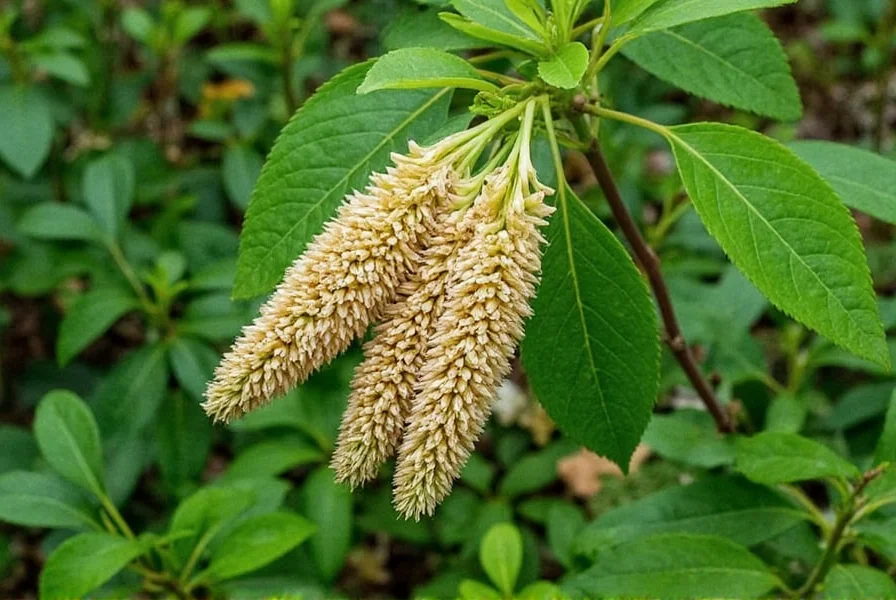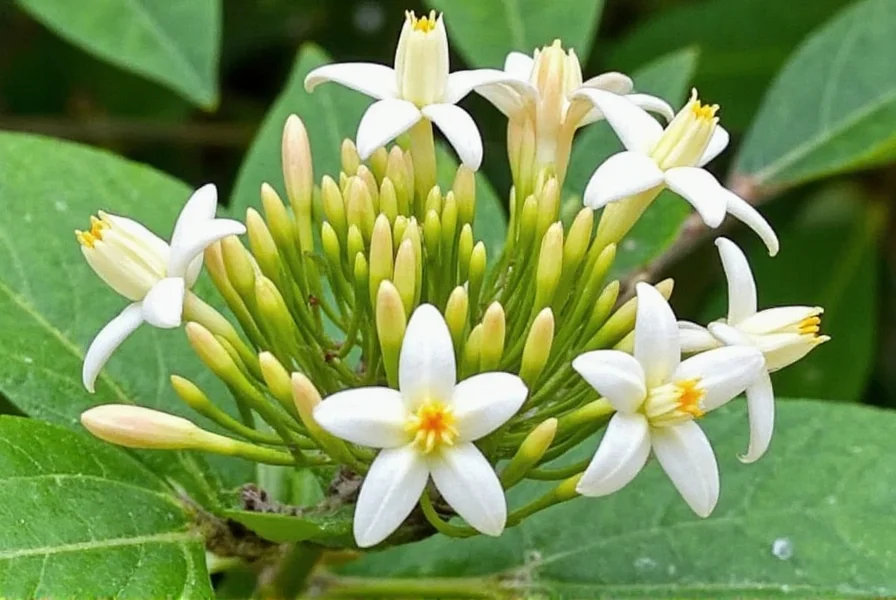Understanding the unique characteristics of star ginger begins with proper botanical identification. This member of the Zingiberaceae family grows 3-8 feet tall with lush, tropical foliage and produces striking pink or white flowers that resemble seashells—hence one of its common names. The plant's rhizomes, while similar in appearance to common ginger, contain different chemical compounds that create its distinctive flavor profile.
Botanical Characteristics and Identification
Star ginger's scientific name is Alpinia zerumbet, though it's sometimes confused with Kaempferia galanga (also called sand ginger or kencur). Key identifying features include:
| Feature | Description |
|---|---|
| Height | 3-8 feet tall when mature |
| Leaves | Large, lance-shaped (12-24 inches long), glossy green |
| Flowers | Shell-shaped, pink to white with yellow stamens |
| Rhizome | Thin, branching structure with pale yellow flesh |
| Aroma | Citrusy, floral notes with mild ginger heat |
The plant's distinctive appearance makes it popular as an ornamental in tropical landscapes, while its rhizomes serve culinary and traditional medicinal purposes. Unlike common ginger which has a spicy, pungent heat, star ginger offers a more delicate flavor profile with citrus undertones.

Geographical Origins and Natural Habitat
Native to coastal regions of Japan, Taiwan, and southern China, star ginger thrives in warm, humid environments with partial shade. In its natural habitat, it grows along forest edges and riverbanks where soil remains consistently moist but well-drained. The plant has successfully naturalized in many tropical and subtropical regions worldwide, including Hawaii, Florida, and parts of Central America.
Gardeners in temperate climates can grow star ginger as a container plant, bringing it indoors when temperatures drop below 50°F (10°C). Understanding star ginger hardiness zones helps gardeners determine whether they can grow this tropical plant outdoors year-round or need to provide winter protection.
Culinary Applications of Star Ginger
Chefs and home cooks value star ginger for its unique flavor profile that differs significantly from common ginger. While regular ginger delivers sharp heat, star ginger provides subtle citrus notes with mild warmth, making it suitable for dishes where an aggressive ginger flavor would overwhelm other ingredients.
Popular culinary uses include:
- Infusing fish and seafood dishes with delicate flavor
- Creating aromatic broths and clear soups
- Adding to fruit salads and desserts for subtle complexity
- Preparing traditional Okinawan awamori liquor infusions
- Flavoring rice dishes and vegetable stir-fries
When substituting star ginger for common ginger in recipes, use approximately 1.5 times the amount since its flavor is more subtle. The young shoots and leaves also serve as edible components in some Asian cuisines, offering a milder ginger flavor than the rhizome.
Traditional Medicinal Applications
Traditional medicine systems in East Asia have utilized star ginger for centuries. Unlike common ginger which is primarily used for digestive issues, star ginger's traditional applications focus on respiratory health and circulatory benefits. Research into star ginger medicinal properties traditional use reveals several common applications:
- Relieving symptoms of colds and mild respiratory infections
- Supporting cardiovascular health through improved circulation
- Addressing mild digestive discomfort with less pungency than common ginger
- Topical applications for minor skin irritations
Modern research suggests star ginger contains different bioactive compounds than common ginger, particularly higher concentrations of certain terpenes that may contribute to its distinctive effects. However, scientific validation of many traditional uses remains limited, and star ginger should not replace conventional medical treatment for serious conditions.
Cultivation Requirements for Home Gardeners
Growing star ginger successfully requires attention to its tropical origins. Whether you're cultivating star ginger in containers or garden beds, these key factors determine success:
Soil and Planting
Star ginger prefers rich, well-draining soil with plenty of organic matter. A mix of garden soil, compost, and perlite provides ideal growing conditions. The rhizomes should be planted 2-3 inches deep with the growth buds facing upward. Unlike common ginger cultivation techniques, star ginger benefits from slightly more acidic soil conditions (pH 5.5-6.5).
Water and Light Requirements
Maintain consistently moist soil without waterlogging. During active growth periods (spring through fall), water when the top inch of soil feels dry. Reduce watering in winter when growth slows. Star ginger performs best in partial shade—morning sun with afternoon shade proves ideal in most climates. Direct afternoon sun can scorch the large leaves.
Temperature and Humidity
As a tropical plant, star ginger thrives in temperatures between 65-85°F (18-29°C). It cannot tolerate frost and suffers when temperatures drop below 50°F (10°C) for extended periods. In USDA zones 8-11, it may survive outdoors with winter mulch protection. Gardeners in cooler climates should grow star ginger in containers that can be moved indoors during winter months.
Comparing Star Ginger with Common Ginger Varieties
Many gardeners confuse star ginger with common ginger (Zingiber officinale) or other ginger relatives. Understanding the differences helps ensure proper identification and usage:
- Flavor profile: Star ginger offers citrusy, floral notes with mild heat, while common ginger delivers sharp, pungent heat
- Plant structure: Star ginger grows taller with larger leaves and distinctive shell-shaped flowers
- Rhizome appearance: Star ginger rhizomes are thinner and more branched than common ginger's knobby structure
- Cultivation needs: Star ginger requires more shade and consistent moisture than common ginger
- Medicinal properties: Traditional uses differ significantly between the two plants
When identifying star ginger versus common ginger, examine both the above-ground plant characteristics and the rhizome structure. Misidentification could lead to unexpected flavor results or inappropriate medicinal usage.
Common Misconceptions About Star Ginger
Several misconceptions surround star ginger that deserve clarification:
- Misconception: Star ginger and common ginger are interchangeable in recipes
Reality: Their flavor profiles differ significantly, requiring recipe adjustments when substituting - Misconception: Star ginger offers identical health benefits to common ginger
Reality: While both have traditional medicinal uses, their bioactive compounds and primary applications differ - Misconception: Star ginger grows easily in any climate with minimal care
Reality: It requires specific tropical or subtropical conditions to thrive outdoors year-round
Understanding these distinctions helps gardeners and culinary enthusiasts make informed decisions about growing and using star ginger appropriately.
Practical Applications for Gardeners and Cooks
Whether you're cultivating star ginger for ornamental purposes, culinary exploration, or traditional herbal preparations, these practical tips enhance your experience:
- Harvest rhizomes after 12-18 months for optimal flavor development
- Store fresh rhizomes in a cool, dark place for up to 3 weeks or freeze for longer storage
- Use young shoots in salads for a mild ginger flavor
- Combine with lemongrass and kaffir lime for authentic Southeast Asian flavors
- Divide established plants every 2-3 years to maintain vigor and control size
For those interested in exploring star ginger benefits for cooking without growing their own, specialty Asian markets often carry fresh or frozen rhizomes. When selecting, look for firm, plump rhizomes without soft spots or mold.
Frequently Asked Questions
Is star ginger the same as common ginger?
No, star ginger (Alpinia zerumbet) and common ginger (Zingiber officinale) are different plants with distinct characteristics. Star ginger has a more citrusy, floral flavor profile with milder heat compared to common ginger's sharp pungency. The plants also differ in appearance, with star ginger growing taller with larger leaves and distinctive shell-shaped flowers.
Can I grow star ginger in a temperate climate?
Yes, but with limitations. Star ginger requires tropical or subtropical conditions to grow outdoors year-round (USDA zones 8-11 with protection). Gardeners in cooler climates can grow it in containers, bringing plants indoors when temperatures drop below 50°F (10°C). Provide bright, indirect light and maintain consistent moisture during the growing season.
What are the primary culinary uses of star ginger?
Star ginger's citrusy, floral flavor makes it ideal for dishes where common ginger would be too overpowering. Chefs use it in seafood preparations, clear broths, fruit salads, and delicate rice dishes. The young shoots and leaves also serve as edible components. When substituting for common ginger, use about 1.5 times the amount due to its milder flavor profile.
Does star ginger have medicinal properties?
Traditional medicine systems in East Asia have used star ginger for respiratory health, circulatory support, and mild digestive issues. Unlike common ginger which is primarily used for nausea, star ginger's traditional applications focus on different health aspects. However, scientific research on star ginger medicinal properties remains limited compared to common ginger, and it should not replace conventional medical treatment.
How do I properly harvest star ginger rhizomes?
Wait until the plant is at least 12-18 months old before harvesting rhizomes. Carefully dig around the base of the plant, removing only a portion of the rhizome cluster to allow the plant to continue growing. Select firm, plump sections without soft spots. After harvesting, clean the rhizomes gently and allow them to dry before storing in a cool, dark place for up to 3 weeks or freezing for longer storage.











 浙公网安备
33010002000092号
浙公网安备
33010002000092号 浙B2-20120091-4
浙B2-20120091-4